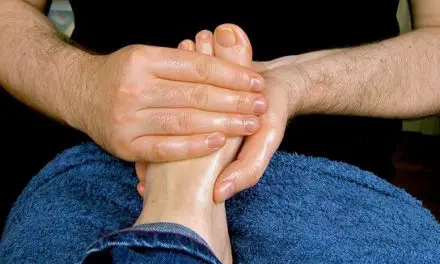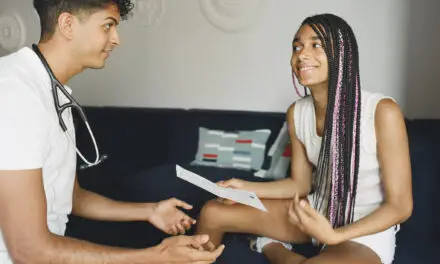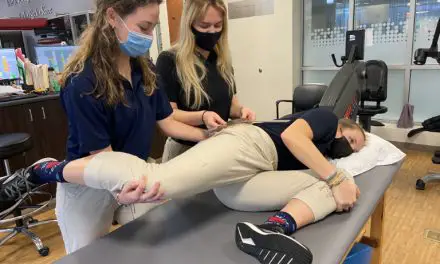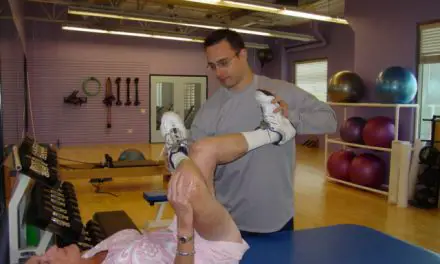A while back, Massage & Fitness Magazine analyzed some of the claims made in a recent article from Velo Magazine about massage and muscle recovery on cyclists. While digging through various studies, I found this one small study with half-marathon runners by Dr. Peter Tiidus et al. (1) where some runners who received a massage on one of their legs after a race reported that the massaged leg felt “more relaxed,” “less stiff,” or “looser.” Yet there is hardly any significant differences between the massaged and non-massaged leg in terms of swelling and blood lactate reduction or muscle soreness.
More recent studies, such as one from Western Sydney University, the University of Milan, and the University of Trás-os-Montes and Alto Douro in Portugal, also had similar findings (2,3,4). So why do some people say that they “feel better” after a massage even if there are hardly any physiological benefits?
“There may well be placebo/psychological effects of massage that should not be discounted,” Dr. Tiidus mentioned in an online interview with Massage & Fitness Magazine, who is the Dean of Brock University’s Faculty of Applied Health Sciences. “We published a study a few years ago which did suggest such effects may occur even though no physiological or performance effects may be evident.” (5)
In this 2011 study, 28 running newbies participated in a 10-week running program in which 12 of them received massage while the rest did not receive any (control). The researchers measured six outcomes: “muscle strength, leg pain at rest, leg pain during running, leg pain after running, daily functioning, and running confidence.” (5) In a nutshell, there were hardly any differences between both groups in these outcomes.
Conclusion: “As no physiological, injury or muscle soreness reduction benefits were noted with regular massage therapy in novice runners, massage therapy cannot be recommended as a useful adjunct to training to lessen these effects. Any possible psychological benefits, while potentially interesting, cannot yet be ascribed to massage intervention itself, nor can they yet be said to definitively help with running training or performance. Hence more research is needed to fully address the exact mechanisms of the potential psychological effects of massage therapist/client interaction and whether this has any significant benefits for training and goal attainment.”
The researchers mentioned that pain is a “multi-facet measure” that has psychological influences as well as physiological ones. The runners who received a massage perceived that they had more control over of their pain associated with training, “while not directly influencing muscle pain and functional measures per se.” Physical contact and speaking with massage therapists who also gave them some pain management advice boosted these runners’ confidence to achieve their running goals. Thus, 100 percent of the massaged runners completed their running goals at the end of the study, compared to just 60 percent of the control group. (5)
However, psychologist Christopher Moyer cautioned that therapists and researchers should not discount the lack of physiological benefits entirely. “We cannot say there are ‘very little or no physiological benefits.’ It is possible, and perhaps even likely, that there are robust physiological benefits, and that the ‘first wave’ of massage therapy research hasn’t discovered them yet. When it comes to physiological massage therapy research, I think we have only just scratched the surface so far. Researchers such as Dr. Tiidus and Dr. Best deserve a lot of credit for completing pioneering studies in this broad area.
“I think it is important, also, that we not always pit physiological mechanisms against psychological mechanisms when trying to understand if and how massage therapy works. For one, they are not exclusive. It’s likely that there are important causal mechanisms belonging to each of those domains. Further, they are not independent. Psychology is rooted in physiology, and physiology is affected by psychological processes.”
While massage therapy research is still in its budding stages, there is much to be explored in the physiological and psychological effects. With better quality research and data, therapists can use them to guide their decisions, explanation, and hands-on work. Yet, with small sample sizes and various limitations in massage research, therapists should be cautious about making claims not supported by quality evidence or sound reasoning.
“There is very little funding for massage research involving humans or in particular athletes. Hence, there are very few larger comprehensive, well-designed studies being conducted,” Dr. Tiidus remarked.
While understanding research can be as daunting as understanding astrophysics, massage therapists who want to advance their knowledge in this area of the profession can take advantage of the available resources offered online.
“First of all, bravo to the massage therapists who want to read research articles even if they are not sure what they are reading,” Dr. Jerrilyn Cambron, PhD, lauded, President of the Massage Therapy Foundation and associate editor of the Journal of Bodywork and Movement Therapies. “Critical appraisal is difficult because of the variety and nuances of research study designs, potential biases, statistics, etc. Learning the language of science is very similar to any other language learned — you need to practice and look things up and even struggle a bit before you get better. The first step is to TRY to get better.”
Dr. Cambron provided some resources that curious massage therapists could benefit from in their practice. “There are several resources in the massage therapy field that help people learn the basics of critical appraisal. Reading these magazine articles help with keeping up to date on the latest information and might also provide information on potential biases and limitations of the articles. Many of them break down research studies into more manageable and understandable parts, which is a good place to start learning.
“If you would rather listen to a discussion on a research article, the Massage Therapy Foundation has a free podcast series called Research Perch focused on research studies in massage therapy. These podcasts are about 20 minutes long and focus on one article at a time. Massage therapists do not have to read the research article to benefit from the discussion, but reading the article first would be helpful for those individuals who want to build their critical appraisal skills.”
Dr. Cambron also mentioned a Journal Club for those who prefer to learn in a social setting. It is kind of like a book club except that the group discusses about a research article in journal rather than a book. “The group might decide to read one article every two weeks, and to discuss the pros and cons of the article as well as the clinical application,” Dr. Cambron explained. “When one member of the club doesn’t understand something about the research design or results, perhaps another person in the group has that knowledge. Having a researcher or someone who is familiar with research be part of the club might be a good idea, but even starting one without expertise would give massage therapists a place to narrow their points of confusion in order to better seek clarification.
“A further step toward learning critical appraisal would be to learn from other professions. The British Medical Journal (BMJ) has compiled several basic articles for health care professionals on how to read research papers. These articles are not specific to massage therapy and some may not be applicable (such as the one on drug trial reports). However, these articles are very good for anyone who wants to have a better understanding of research literature.”
Massage Therapy Foundation also offers continuing education credits for those who want to learn to critically appraise research and science literature. Education and Training Solutions has an online course called Basics of Research Literacy, which is an eight-hour self-paced NCBTMB-approved course that focuses on some of the vocabulary used in research studies, potential biases encountered, and how to search for scientific articles.
“The bottom line is that we all have to start somewhere. The key is to START. Reading research articles is not always easy, but there are many resources out there to help you along the way,” Dr. Cambron suggested.
Despite the current research that states massage therapy has little or no physiological benefits for muscle soreness and other aforementioned conditions, massage therapists should still continue to provide their services for athletes and other active clients. Caring for another person with touch has great benefits for both the giver and the recipient, and science is still prodding for answers on why our clients tend to feel better.
“I received a lot of massage therapy during my twenty-year athletic career,” Dr. Moyer recalled. “My subjective impression was that it helped my recovery a lot, especially when I was working with a massage therapist who was receptive to the needs of an athlete. I would be surprised if we never uncovered objective evidence for how massage therapy positively influences an athlete’s physiology, recovery, and performance. But for now we cannot say for sure what is going on, even if we can rule a few possibilities out.”
References
1. Tiidus P, Dawson K, Dawson L. Evaluating the Influence of Massage on Leg Strength, Swelling, and Pain Following a Half-Marathon. Journal of Sports Science & Medicine. 2004 Nov; 3(YISI 1): 37–43.
2. Thomson D, Gupta A, Arundell J, Crosbie J. Deep soft-tissue massage applied to healthy calf muscle has no effect on passive mechanical properties: a randomized, single-blind, cross-over study. BMC Sports Science, Medicine, and Rehabilitation. 2015 Sep 21;7:21. doi: 10.1186/s13102-015-0015-8.
3. Cè E et al. Stretching and deep and superficial massage do not influence blood lactate levels after heavy-intensity cycle exercise. Journal of Sports Sciences. 2013;31(8):856-66. doi: 10.1080/02640414.2012.753158.
4. Garrido N et al. Acute effects of muscle massage previous to strength training on biochemical markers of delayed onset muscle soreness. British Journal of Sports Medicines. 2013;47:e3 doi:10.1136/bjsports-2013-092558.54
5. Dawson K, Dawson L, Thomas A, Tiidus P. Effectiveness of regular proactive massage therapy for novice recreational runners. Physical Therapy in Sport. 2011 Nov;12(4):182-7. doi: 10.1016/j.ptsp.2011.02.007.
Nick Ng is the editor of Massage & Fitness Magazine and the managing editor for My Neighborhood News Network.
An alumni from San Diego State University with a bachelor’s in graphic communications, Nick also completed his massage therapy training at International Professional School of Bodywork in San Diego in 2014. In 2021, he earned an associate degree in journalism at Palomar College.
When he gets a chance, he enjoys weightlifting at the gym, salsa dancing, and exploring new areas in the Puget Sound area in Washington state.





